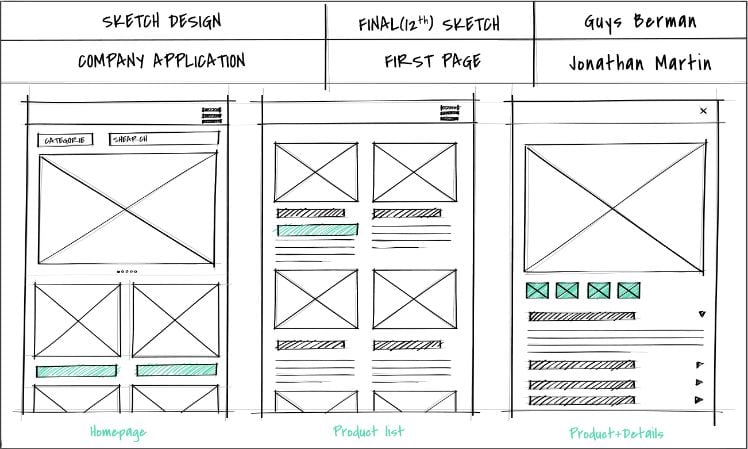The Growth-Driven Design methodology is all you need to redesign your website.
Haven’t you heard of it yet? Discover what this design methodology consists of and how you can apply it in the redesign of a web project.
It implies a change in the work approach but, once you know its benefits and savings, you won’t want to go back. Discover everything Growth-Driven Design can do for your website.
What is Growth-Driven Design?
Your website is your window to the world. It’s your 24-hour store, your cover letter, your catalogue, your business card…
But stop and think, is it completely up to date? Are your latest offers promoted? Is your design still trendy? Does navigation provide a good user experience?
If you answered no to any of these questions, you should check out the Growth-Driven Design (GDD) methodology.
If you think the time has come to redesign your website, bear in mind that you will have to do the following: review or write content, prepare an attractive web design, implement new features etc.
Many tasks that are likely to take several months to complete. Growth-Driven Design allows you to accelerate this process.
Growth-Driven Design allows you to continually implement new features or readapt designs to accelerate the redesign process.

Whilst with standard methods you should wait months for the structure and design to be finished, with GDD you could launch your web project as soon as the most important elements are finished.
It’s a methodology that stands for continuous website creation. Thus, thanks to Growth-Driven Design you can continuously implement new functions or readapt designs based on needs, user demands, feedback etc.
With this approach, a website is never finished because there will always be room for improvement.
You might be interested | Keys to Creating a Successful International Website
Characteristics of Growth-Driven Design
Lower initial cost
While traditional web design involves high initial investment, the GDD methodology does the work continuously, making it lower. The investment can be started with fewer resources and is established over time.
Agility
The Growth-Driven Design methodology allows you to easily adapt to changes. While with a traditional approach the new features are delayed for several months. This is a huge waste of time and probably money.
Beyond the time it takes for the new version to go live, hasn’t it happened to you that the web has been down or in maintenance mode for hours or days until the new version was working? This is not the case with GDD.
Safer decisions
With traditional web design, you’ll never be certain that the new design will guarantee better results. However, with Growth-Driven Design everything is tested and measured, so you only implement what works. If it doesn’t work, it gets better you keep improving it until it does.

Steps to create your website based on GDD
GDD is based on the agile principles of SCRUM, combining different concepts in a comprehensive and efficient web design approach. This methodology consists of 3 phases: strategy, launch and continuous improvement.
Strategy
Just like traditional web design, the first step is to develop a strategy. Analyse your current website to see what works and what doesn’t. Try to set goals based on that.
The objectives for your web redesign must be aligned with the marketing goals of the business. Also, they must be SMART (specific, measurable, achievable, realistic and timely).
It’s also essential to bear in mind that this methodology is focused on the user. Therefore it’s necessary to know exactly who your clients are. You could do this by collecting and analysing the data you have from your customers and define buyer personas.
After that, you should take a look at the numbers of your website. Think about metrics such as visits, bounce rate, new users, geographical location etc.
In the research process, the fundamental assumptions must be defined, such as the value proposition for each product or service and what information users are looking for. This will help to define the strategy of each page and the overall one of the entire website.
As a result of the strategy phase, a wish list is drawn up. It’s recommended to create one from scratch without taking the current website too much into account. The ideal would be to list everything that you would like your website to have if you didn’t have any technical, time or budget limitations.
You might be interested | International SEO: the best strategies and practices to conquer the world

Launch
In traditional design, the launch is considered the final point of the web design. In Growth-Driven Design that’s not the case. The website is launched as an MVP (Minimum Viable Product) with just enough features to satisfy customers and provide feedback for future product development.
This means you’ll have to list the things that are a priority and which are planned to be created in the future. To do this, you can apply an 80/20 approach: first, implement 20% of the ideas which will have an 80% impact.
If you’re not sure if you should implement a certain feature already, then ask yourself if any problems could occur if you would wait. It might be possible that some functions aren’t that important but would be good to have in terms of user experience.
At this point, the development phase itself starts: copywriting and content creation, website architecture, design, development and testing.
Continuous improvement
Once your website is launched, it’s time to work on continuous cycles of testing, learning and improvement. Implement the elements that have been left pending and start working on them for successive improvements. And remember, this is not a static list: it must expand over time.
The process for continuous improvement can be divided into four steps: plan, develop, analyse and change.
- Plan: make a list of prioritised actions every time you need to plan the next development cycle.
- Develop: the team members will take care of implementing the shortlisted improvements.
- Analyse: after a reasonable amount of time, you should gather all the information to study the data and see if the objectives have been met.
- Change: what results did you obtain? If the outcome is as expected you can apply it to the live version of your website or if it didn’t you can start the cycle again.
Ready to redesign your website and get the most out of it? Find the right experts to help you out!













